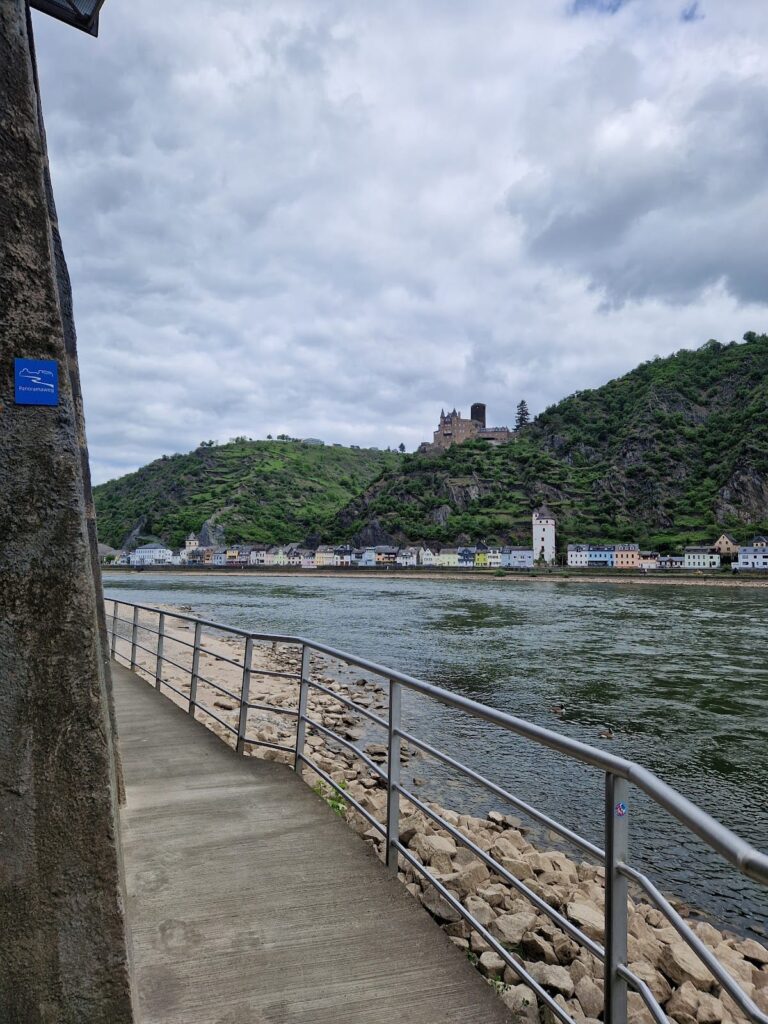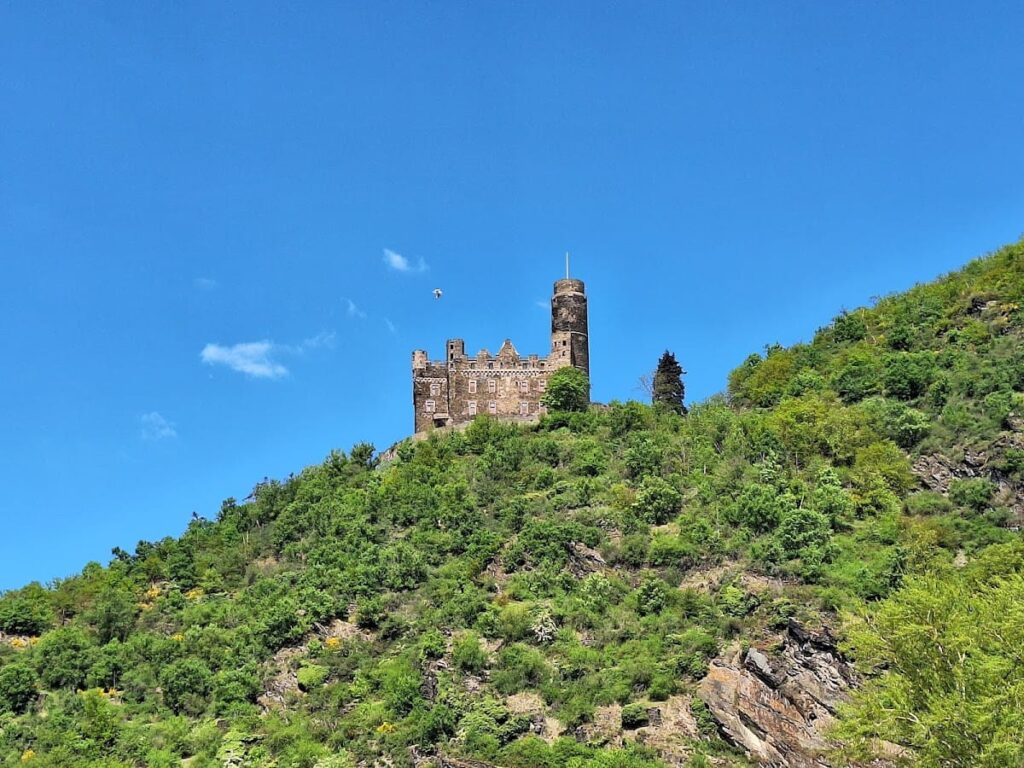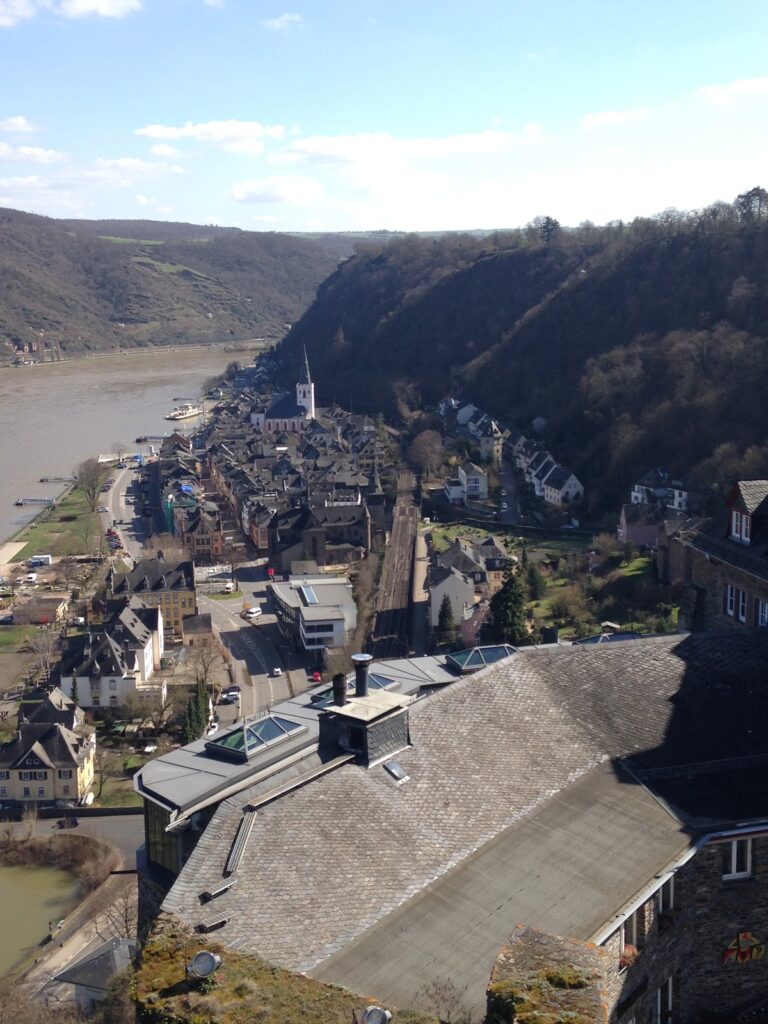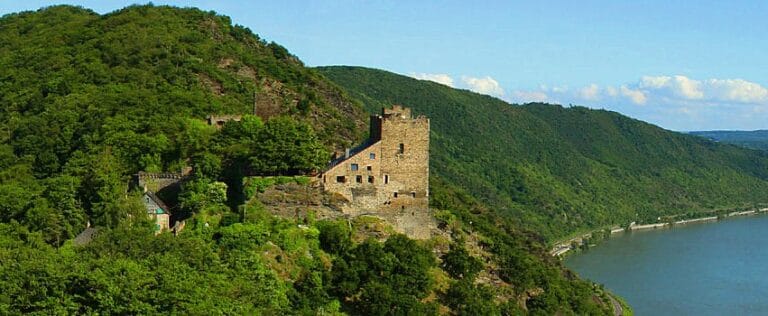Katz Castle: A Historic Fortress Overlooking the Rhine in Germany
Visitor Information
Google Rating: 4
Popularity: Very Low
Google Maps: View on Google Maps
Official Website: burg-katz.de
Country: Germany
Civilization: Medieval European
Remains: Military
History
Katz Castle stands above the town of Sankt Goarshausen on the right bank of the Rhine River in southwestern Germany. It was built between 1360 and 1371 by the Counts of Katzenelnbogen, a noble family seeking to secure their territories in the region. The castle formed part of a customs barrier along the Rhine, working in tandem with Rheinfels Castle on the opposite bank to control river traffic and collect tolls.
The castle’s original name was Neukatzenelnbogen, but it was later shortened to Katz. This change likely reflected a local symbolic pairing with the nearby Trier Electorate’s castle Maus, built in 1356. The two castles became known as the “cat and mouse,” a nickname that highlighted their close proximity and contrasting names.
After the Katzenelnbogen male line ended in 1479, Katz Castle passed to the Landgraves of Hesse through marriage. This transition sparked inheritance disputes between the Hesse-Kassel and Hesse-Darmstadt branches. During these conflicts, the castle was besieged twice, in 1626 and 1647, suffering partial destruction.
In 1692, French forces under King Louis XIV damaged the castle during the War of the Palatine Succession. Later, in 1758, the French captured Katz Castle amid the Seven Years’ War but returned it in 1763 following the conflict’s end. In 1806, Napoleon ordered the demolition of the castle’s outer defenses, leaving it mostly in ruins.
Throughout the 19th century, Katz Castle changed ownership several times. In 1896, Ferdinand Berg, the district administrator of Sankt Goarshausen, acquired the site. He commissioned a major reconstruction by the Cologne firm Schreiterer & Below, which replaced much of the medieval structure with a palace-style residence, preserving only parts of the original tower and walls.
In 1928, the castle was sold at auction. By 1936, it served as a training camp for the Reich Labour Service. After World War II, the Federal Republic of Germany used Katz Castle temporarily as a school and boarding facility for the Wilhelm Hofmann Gymnasium until 1966. It later functioned as a social services recreation center until 1987, when fire safety concerns led to its closure.
In 1989, the castle was sold to Japanese consultant Satoshi Kosugi, who planned to convert it into a hotel but never realized this project. Since 2002, Katz Castle has been part of the UNESCO World Heritage Site of the Upper Middle Rhine Valley. It remains privately owned by Japanese proprietors and is not open to the public.
Remains
Katz Castle occupies a small but solidly built site on a hillside overlooking the Rhine. Its compact layout reflects the limited space available on the rocky slope. The castle’s main defensive feature was a tall tower, known as a bergfried, standing about 40 meters high near the main entrance on the side facing potential attackers.
Defensive structures included a deep neck ditch carved directly into the rock, designed to hinder enemy approach. A drawbridge once spanned this ditch, providing controlled access. In front of the tower stood a triangular bastion, adding further protection to the castle’s entrance.
The residential section originally rose three stories high. However, the 19th-century reconstruction significantly altered the medieval buildings. Most original structures were replaced with a palace-style residence, leaving only fragments of the bergfried ruins, the shield wall on the uphill side, and the zwinger, or outer ward, intact.
The castle’s remaining fortifications are mostly in ruin, with some walls and defensive earthworks still visible. The materials and decorative details from the medieval period were largely lost during the 19th-century rebuilding, which sought to evoke a medieval appearance rather than preserve original fabric.
Today, Katz Castle stands as a private property with no public access. Its ruins and reconstructed sections continue to dominate the Rhine valley landscape, overlooking the nearby Lorelei rock and the town below.










